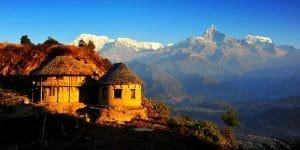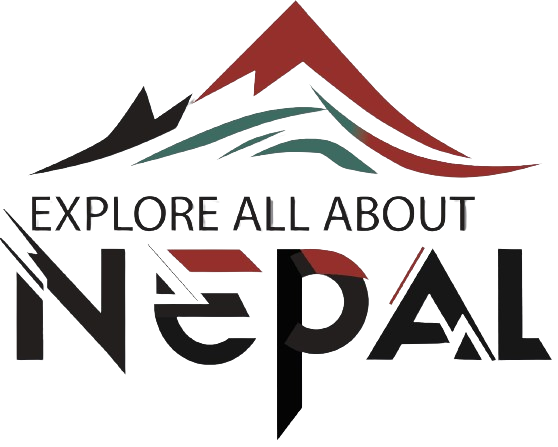Nepal is home to eight of the world’s ten tallest peaks, including Mount Everest. The dramatic snow-capped mountains create awe-inspiring backdrops for any photograph. From the towering peaks of Annapurna to the rugged beauty of Langtang, these landscapes provide endless opportunities for unique shots. Despite being a relatively small country, Nepal’s elevation ranges from just 60 meters above sea level in the Terai plains to 8,848.86 meters at the summit of Everest. This diversity allows photographers to capture a variety of landscapes, from lush jungles and rolling hills to alpine meadows and glacial lakes.

1. Essential Gear for Landscape Photography in Nepal
- Cameras and Lenses
- Recommended camera types (DSLR, mirrorless).
- Lens types (wide-angle for landscapes, telephoto for details, etc.).
- Tripods
- Importance of stability for sharp images.
- Lightweight options for trekking.
- Filters
- Use of polarizing filters to reduce glare and enhance sky/cloud contrast.
- Neutral density filters for long exposure shots (waterfalls, rivers).
- Drones
- Capturing aerial views (rules and regulations for drone usage).
- Backup and Storage
- Carrying extra batteries and memory cards.
- Options for portable storage devices.

2. Planning Your Photography Trip
- Researching Locations
- Iconic spots: Annapurna Base Camp, Everest Base Camp, Rara Lake, Pokhara.
- Lesser-known gems: Langtang Valley, Khaptad National Park, and Ilam tea gardens.
- Weather and Seasonal Tips
- Best seasons: Pre-monsoon (spring) and post-monsoon (autumn).
- How monsoon and winter affect visibility and access.
- Timing the Perfect Shot
- Golden hours: Sunrise and sunset photography.
- Blue hour for a mystical effect.
Techniques for Stunning Landscape Photos
- Composing the Perfect Shot
- Rule of thirds for balanced landscapes.
- Incorporating leading lines (trails, rivers).
- Using natural frames (trees, windows).
- Playing with Light
- Capturing dramatic lighting during sunrise/sunset.
- Handling harsh light in the daytime.
- Long Exposure Photography
- Tips for smooth water effects (rivers and waterfalls).
- Capturing moving clouds.
- Panoramas
- How to stitch panoramic shots for mountain ranges.
- Depth of Field
- Emphasizing foreground elements like prayer flags or mani stones.
4. Cultural Sensitivity and Ethical Practices
- Respecting Local Customs and Traditions
- Seeking permission before photographing people or sacred sites.
- Eco-friendly Photography
- Leaving no trace behind while shooting in remote areas.
- Wildlife and Natural Habitats
- Keeping a respectful distance from animals and flora.
Overcoming Challenges in Nepal’s Terrain
- Dealing with Altitude
- Staying healthy and hydrated while photographing at high elevations.
- Unpredictable Weather
- Preparing for sudden changes in weather.
- Limited Access to Power
- Charging gear in remote areas.
- Travel Light
- Packing only essentials to avoid extra weight.
Post-Processing Tips for Landscape Photos
- Software Suggestions
- Adobe Lightroom and Photoshop for enhancing images.
- Editing Techniques
- Adjusting exposure, contrast, and sharpness.
- Enhancing colors naturally (sky, water, and greenery).
- Maintaining Authenticity
- Avoiding over-editing to preserve the natural beauty of Nepal.
Unique Opportunities in Nepal for Photographers
- Festivals and Cultural Landscapes
- Capturing landscapes during Dashain, Tihar, or Holi.
- Tea Gardens and Rural Villages
- Photogenic rural settings in Ilam or Bandipur.
- High Altitude Lakes
- Tilicho Lake, Gokyo Lakes, and their reflective beauty.
Recommended Itineraries for Landscape Photographers
- Short Treks
- Poon Hill for sunrise views of Annapurna and Dhaulagiri.
- Long Treks
- Everest Base Camp for rugged landscapes.
- Upper Mustang for desert-like scenery.
- Accessible Spots for Non-Trekkers
- Sarangkot and World Peace Pagoda in Pokhara.
Inspirational Stories and Photos
- Share a few personal experiences or quotes from photographers who’ve captured beauty.
- Examples of award-winning photographs are taken.
Conclusion
- Encouragement for readers to explore Nepal’s landscapes with their camera.
- Reminder to respect nature and the local culture.
- Call-to-action: Share your photos and experiences from Nepal.
In essence, Nepal combines natural grandeur with cultural depth, making it a dream destination for landscape photographers. Whether you’re capturing the serenity of a mountain lake or the vibrant hues of a sunrise over the Himalayas, Nepal offers something for every photographic style and vision.


